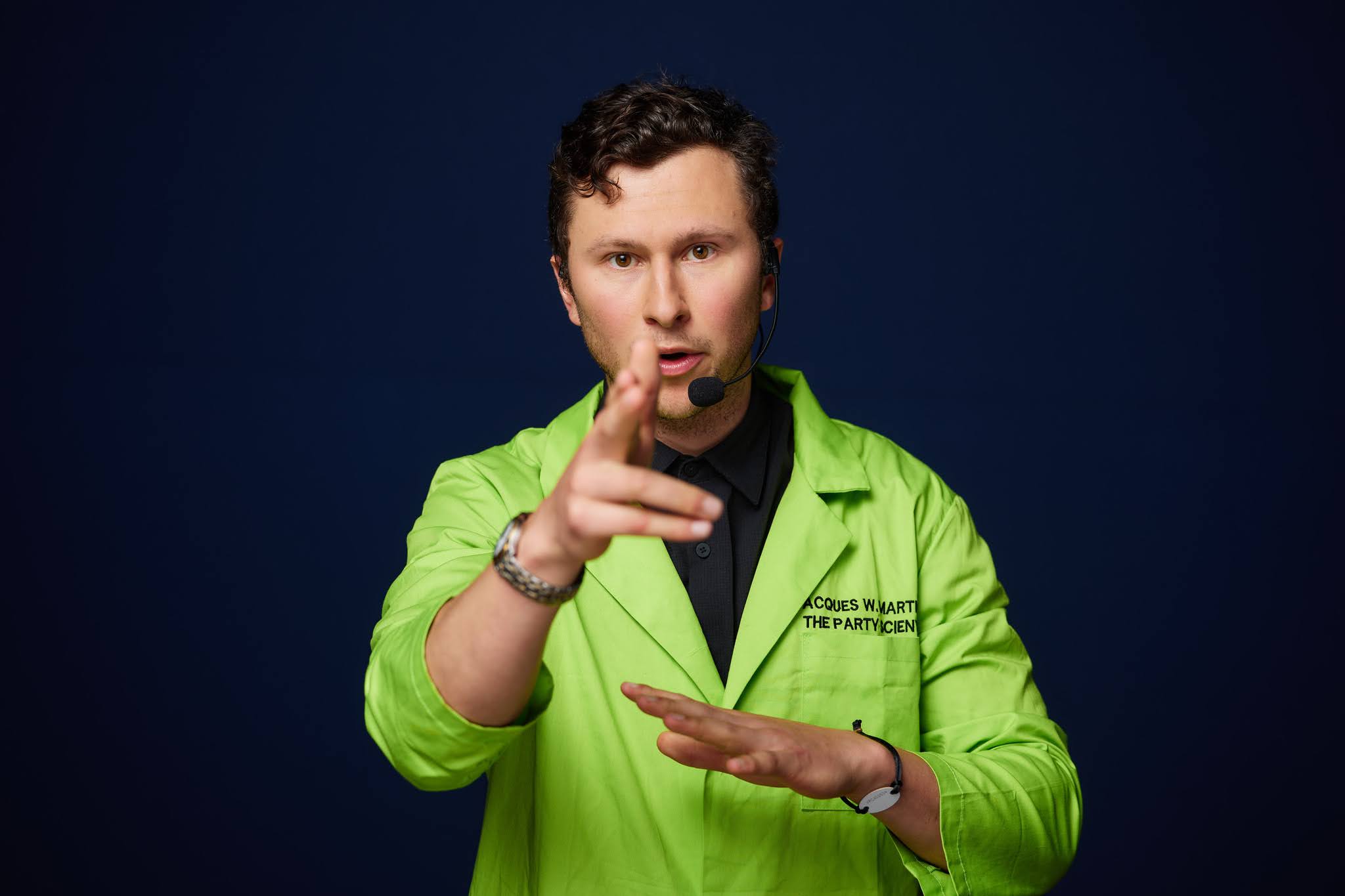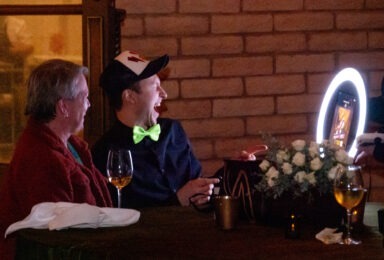How to design events that leave a lasting impact
At MPI’s WEC 2023, Jacques Martiquet, known professionally as The Party Scientist, had a room full of meeting professionals dancing, laughing and opening their hearts to people who had been strangers when they entered the room. His session, “Use Social Neurochemistry to Create the SHARED Experiences Guests Rave About” proved to be an invigorating, interactive learning experience that upended the norms of what we tend to think of as a learning session at a conference, with a speaker and an audience.
To Martiquet, fun is not an end goal, but a means to create more belonging and community in an event, and more creativity and empathy within the people there.
Smart Meetings spoke with Martiquet to learn how he did it.
Read More: Lessons Learned from MPI WEC in Mexico
“I feel like most people, when you ask them what they’re looking forward to, will share an event or an experience that they’re attending. I think it’s really key to well-being,” he says.
Who is The Party Scientist?
The Party Scientist is an experience designer and group facilitator who has developed a practice for invoking human connection and joy among large groups of people. He has facilitated highly rated events with Global Professional Conferences, Fortune 500 companies, and at international festivals.
 Martiquet was trained in conventional research, working in a social neurochemistry laboratory on tadpoles in college. From there, he experienced a growing interest in public health and worked under a mentor who studied party behaviors in college students—much of which typically has consequences on a person’s health, such as drinking alcohol and smoking. Martiquet began to grow increasingly interested in how human beings can healthily celebrate and socialize. He says, “I had this fire inside me to study the public health benefits of gatherings and human connection.”
Martiquet was trained in conventional research, working in a social neurochemistry laboratory on tadpoles in college. From there, he experienced a growing interest in public health and worked under a mentor who studied party behaviors in college students—much of which typically has consequences on a person’s health, such as drinking alcohol and smoking. Martiquet began to grow increasingly interested in how human beings can healthily celebrate and socialize. He says, “I had this fire inside me to study the public health benefits of gatherings and human connection.”
After earning his degree, Martiquet began to seek the answers to his questions. He traveled the world and led flash mobs in 12 countries. “I was alone, I had a big speaker with me, and I would just go into the streets. It was all about seeing if I could get 100 strangers to dance. And I usually succeeded.”
He journaled about his experiences and documented what he would say and do to engage strangers. From there, he organized spreadsheets, developing tools and principles to build his philosophy: “How to create psychological safety, advance belonging and make people feel super alive…I really believe we can create that through the exchange of emotions.”
That Sounds Great…But How Does It Work?
During his event at WEC, he explained that the activities he was leading would release dopamine and serotonin in participants’ brains. He explained that “the hidden predictor of all our behaviors, how much we connect with each other, how much we make people feel safe,” is none other than our physiology. “It will determine our experience at an event.”
He incorporates mindfulness, gratitude, music and movement into his sessions. “The point of beginning a session with gratitude and regulating the body is to ensure that people are ready to connect and are less stressed when they do,” he says. Martiquet urges us to remember that we all have things to be grateful for, and bringing that lens of gratitude into the meeting space helps people associate a stronger positive feeling with the content.
Read More: How to Cultivate Mindfulness
Music and movement create joy, Martiquet says. People certainly can be engaged when they are sitting and observing a speaker, demonstration or performance, but their heart rates are low. They may get tired, or struggle to stay focused. “If we put them into a more alert state, and get them to use their entire body, then learning is going to be more effective. And, well, it’s just more fun too.”
Martiquet hopes to inspire event producers to incorporate more of these practices so their guests have a continual flow of stress-reducing hormones throughout the event. This makes an enormous impact on their experience: “They’re more engaged. They’re more focused on the content and they’re able to connect at a deeper level.”
Wow! How Can I Do It?
Martiquet recognizes that meetings can be very intellectual, so he advises, “Give intellectuals the intellectual context of why we’re doing this, why positivity and joy are going to improve learning, improve networking, improve health.”
What about people who feel resistant or shy? Martiquet suggests: Explain the science. Give them the ROI they will get from participation. Facilitate the moment with authority.
Martiquet has found that people tend to be more willing to participate for others than for themselves, so he encourages facilitators to tell any reluctant participants, “You’re going to improve belonging for everyone around you if you’re more courageous, authentic and vulnerable.”
According to Martiquet, the sooner into an event we implement his techniques, the better. “That fertile soil for deep connection is going to exist” from then through the rest of the event.
He offers a step-by-step philosophy and a radical philosophy. The step-by-step method is to break up content with these practices. Have people move for 60 seconds between sessions to feel more energized and to reinforce positive feelings throughout the event.
The radical philosophy is to totally break the paradigm of the audience and the celebrity speaker. “Create experiences where the speakers are talking, but they’re not the focus. The focus is the collaborative thinking and interaction in the audience, and the speaker is there to facilitate that.”
Martiquet offers free consultations, and recommends speaking with him in his coaching sessions. He uses science-based methods to “help event producers adopt innovative methods to create belonging, joy, energy and psychological safety in their audience so that guests leave raving about the community, about the people, stay in touch with the people they’ve met and make long-lasting connections.”




